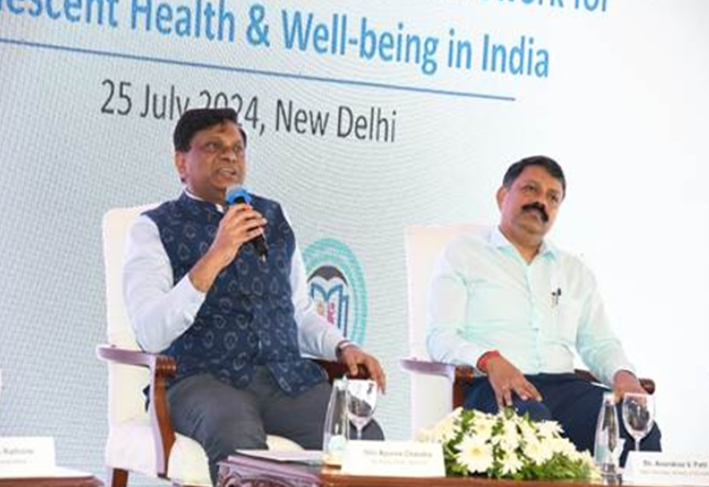Economic Case for Investment in the Well-being of Adolescents in India (GS Paper 3, Economy)

Introduction
- The "Economic Case for Investment in the Well-being of Adolescents in India" report emphasizes the vital role that investing in adolescents plays for the country's future economic and social prosperity.
- Adolescents, defined as individuals aged 10–19, make up a significant portion of India's population.
- The report builds upon global findings, including insights from the “Adolescents in a Changing World – The Case for Urgent Investment” report, which was released by the Partnership for Maternal, Newborn & Child Health (PMNCH) at the 77th World Health Assembly.
- This framework helps underline the urgent need for targeted investments to enhance the well-being of this demographic.
Major Highlights of the Report
- Global Context: The global study commissioned by PMNCH highlights the critical need for investment in adolescents to improve their overall well-being. It underscores how this investment can yield significant benefits not only for the individuals but also for societies at large.
- Improvements in India: Over recent decades, India has made notable strides in enhancing adolescent well-being through various government programs. These efforts have led to tangible improvements in health, education, and social outcomes for adolescents. The report highlights seven key programs that have been instrumental:
- Adolescent Health Programs: Focused on improving physical and mental health outcomes.
- Educational Initiatives: Aimed at increasing access to quality education.
- Child Marriage Prevention: Programs to reduce the incidence of early marriages.
- Road Safety: Measures to improve safety and reduce accidents among adolescents.
- Economic Returns: The report projects that investments in adolescent well-being can lead to substantial economic benefits. For every dollar invested, the returns could range from USD 4.6 to USD 71.4. This translates to a potential annual investment of USD 33 billion yielding returns of up to USD 476 billion, which could boost India's GDP by approximately 10.1%. These figures reflect the long-term economic gains from investing in the health, education, and overall development of adolescents.
Challenges Faced by Adolescents
Adolescents in India face numerous challenges that can affect their development and future prospects:
- Population Changes: The demographic shift and large adolescent population require substantial investments in infrastructure and services.
- Mental Health: Climate change and environmental issues impact mental well-being, necessitating focused mental health support.
- Educational Inequalities: The learning crisis exacerbates existing educational disparities, affecting future opportunities.
- Human Rights Issues: Violence, neglect, and human rights abuses, particularly against girls and marginalized groups, remain significant concerns.
Government Initiatives
The Indian government has implemented several initiatives to address these challenges and improve adolescent well-being:
- Rashtriya Kishor Swasthya Karyakram (RKSK): This flagship program is designed to cater to the health and developmental needs of adolescents. It focuses on marginalized and underserved groups, ensuring comprehensive coverage.
- School Health and Wellness Programme: Integrated into the Ayushman Bharat scheme, this program aims to strengthen health promotion and disease prevention in schools through trained educators.
- Scheme for Promotion of Menstrual Hygiene: This initiative aims to increase awareness and access to menstrual hygiene products among adolescent girls, contributing to better health outcomes.
- Union Budget 2024-25: The budget includes a substantial Rs 2 lakh crore allocation for education, job creation, and skill development, targeting the needs of 41 million youth. This investment is intended to enhance educational opportunities, create jobs, and develop skills to prepare adolescents for the future.
Conclusion
- The "Economic Case for Investment in the Well-being of Adolescents in India" report underscores the urgent need for large-scale investments in this demographic.
- Such investments are crucial not only to address the immediate challenges faced by adolescents but also to ensure long-term economic benefits.
- Investing in adolescents can lead to significant improvements in health, education, and social outcomes, contributing to overall economic growth and development.
- The high returns on investment and the potential for reduced inequalities highlight the importance of prioritizing adolescent well-being in national and global development agendas.


